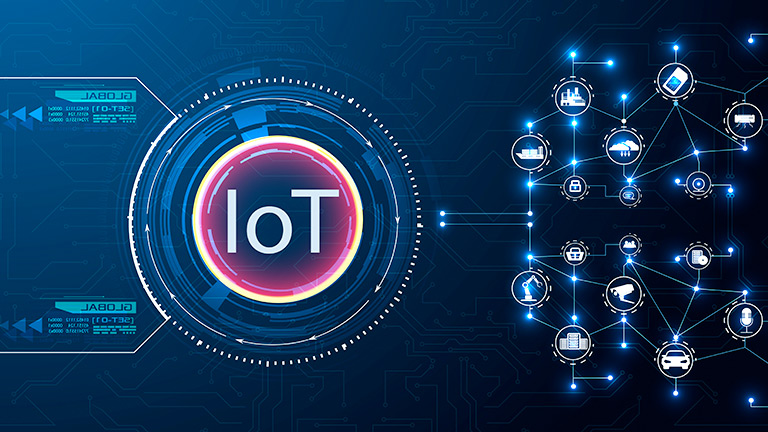
IT Support & SecurityWritten By: Suman Kumar Paul
Smart and interconnected IoT devices offer numerous methods for optimizing workflows and productivity, increasing user experience, and lowering expenses in a diverse range of industries and surroundings. While the advantages of IoT devices may be seen in factories, hospitals, vehicles, homes, and communities, their inherent vulnerabilities bring new security threats and concerns. These flaws expose networks to cyber-attacks, which may seriously destabilize companies and economies.
Impact of IoT Device Security Vulnerabilities
IoT devices are susceptible mostly due to a lack of built-in security measures to safeguard against attackers. The main cause is the restricted environment and these devices' low computing capabilities. IoT devices are often low-power devices that can only perform a limited set of operations. Consequently, they cannot resist the addition of security controls and processes, and data protection measures.
Vulnerabilities in IoT devices may empower cybercriminals to exploit them and execute assaults on other important systems. The effectiveness of developing smart devices with a security-by-design approach is determined by the criticality of these devices and the consequences of a cyber-attack against them.
10 Top IoT Security Vulnerabilities
Insecure Network Services
Cyber attackers will attempt to infiltrate and break valuable or secret information exchanged between the device and a server by exploiting loopholes in the communication protocol and technologies operating across IoT devices.
Weak, Guessable, or Hardcoded Passwords
Weak, default and hardcoded passwords are the most common technique for cybercriminals to infiltrate IoT technologies and establish large-scale malicious nodes and other spyware. Password management in a decentralized IoT ecosystem is a time-consuming and complex task, particularly given that IoT devices are maintained over the air.
Lack of Secure Update Mechanism
Unauthorized software and firmware upgrades are a significant risk vector for IoT device assaults. A botched update can cause important IoT devices to fail and have tangible implications in industries such as healthcare and energy. To safeguard firmware and software upgrades, we must restrict access to them and authenticate the source and reliability of the updates.
Insecure Ecosystem Interfaces
To prevent unsecured online, backend API (Application user interfaces), cloud, or mobile interfaces in the IoT ecosystem, a robust authentication, and authorization mechanism must be in place. Multiple methods have been established to protect the authenticity of IoT devices that consider the restricted characteristics of these endpoints.
Lack of Physical Hardening
IoT devices are deployed in scattered and distant environments, not in a controlled setting, although in the field to execute their functions. By obtaining access and manipulating the physical layer, an attacker can interrupt the functionalities offered by IoT systems.
Insecure Default Settings
IoT devices are delivered with default, hardcoded configurations that are vulnerable and easy for attackers to exploit. Once these settings have been obtained, attackers can investigate hardcoded default passwords, hidden security holes, and flaws in the device firmware.
Insecure Data Transfer and Storage
The security of IoT data, whether at rest or in transit, is critical to the dependability and integrity of IoT applications. This information is incorporated into automated decision procedures and regulations, which can have major physical consequences. Businesses must protect this information effectively. Strong encryption used across the IoT data lifecycle, as well as adaptive authentication and access control, can help protect IoT data against infiltration and attacks.
Insufficient Privacy Protection
Many IoT systems in use acquire personal data, which must be carefully stored and handled to comply with different privacy requirements. This sensitive data might range from healthcare data to energy consumption and driving habits. Weak protections will compromise users' confidentiality and lead to legal ramifications.
Use of Insecure or Outdated Components
Vulnerabilities in software dependencies or outdated technologies may jeopardize the cyber security of the IoT ecosystem. Manufacturers' use of obsolete or vulnerable technologies, especially open-source modules, to develop their IoT devices produces a complicated and difficult-to-track distribution network. These components may inherit vulnerabilities known to cybercriminals, resulting in an extended threat environment ready to be victimized.
Lack of Device Management
Administering all devices throughout their lifespan is among the most critical jobs and serious security concerns in the IoT ecosystem. Unauthorized devices in the IoT infrastructure will be able to gain access to and spy on business networks, intercepting traffic, and data. The provisioning, operation, and upgrading of devices are the primary aspects of IoT device management. The detection and identification of IoT devices is an essential initial step in their control and management.
Solution to Secure IoT Devices
The ability to spot IoT devices is vital for achieving future expansion. Digital certificates are ideal for establishing machine IDs and validating the dispersed IoT environment. Many IoT vendors and businesses are now enjoying the benefits of digital certificates for device identity, validation, and privacy. Furthermore, generating and administering thousands of digital certificates across the whole corporate IoT ecosystem can be difficult if the certificate management solution does not provide automation and flexibility.
A machine identity management solution will assist enterprises in securing their IoT ecosystem by creating and implementing IoT security solutions with precise guidelines and norms, scaling security, and retaining robust and effective security without impacting the effectiveness and performance of restricted IoT devices.
With customized IoT solutions, VTPL empowers enterprises with the capabilities they require to eliminate IoT device risks. Businesses can observe when individuals or endpoints approach or communicate with their IT (Information Technology) infrastructure thanks to stronger network transparency integrated into these technologies. VTPL also provides enhanced network controls, allowing enterprises to regulate device accessibility and minimize the timeframe it requires to handle security concerns.
TAGS - data security service managed security service information security management services best it security solutions cyber security service providers security
See Also - Is Your Cloud Enterprise Disaster Recovery Ready?